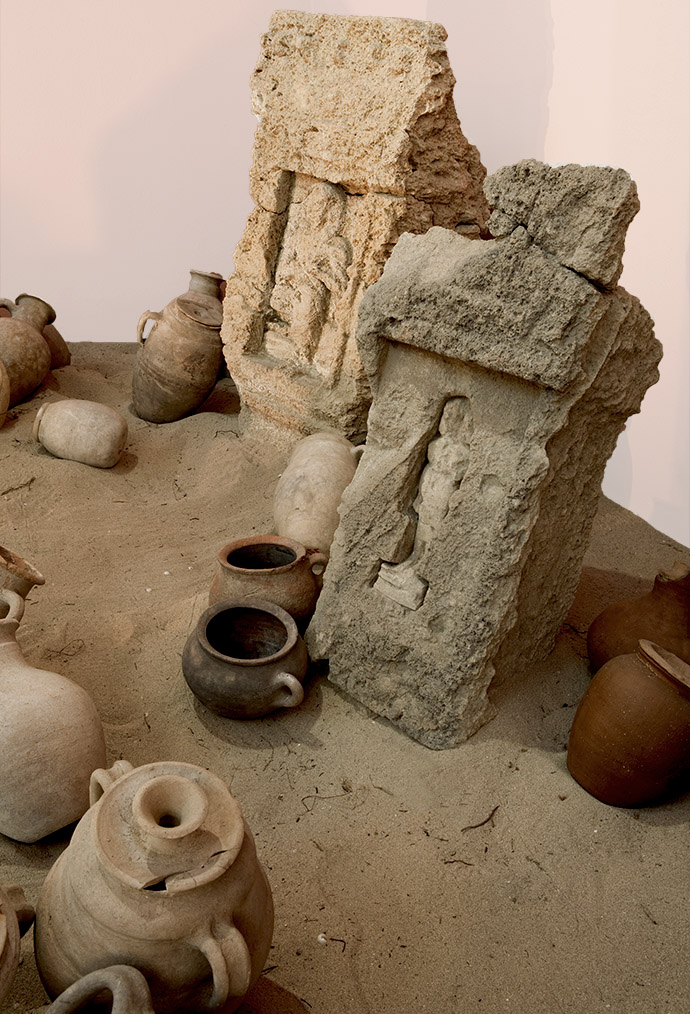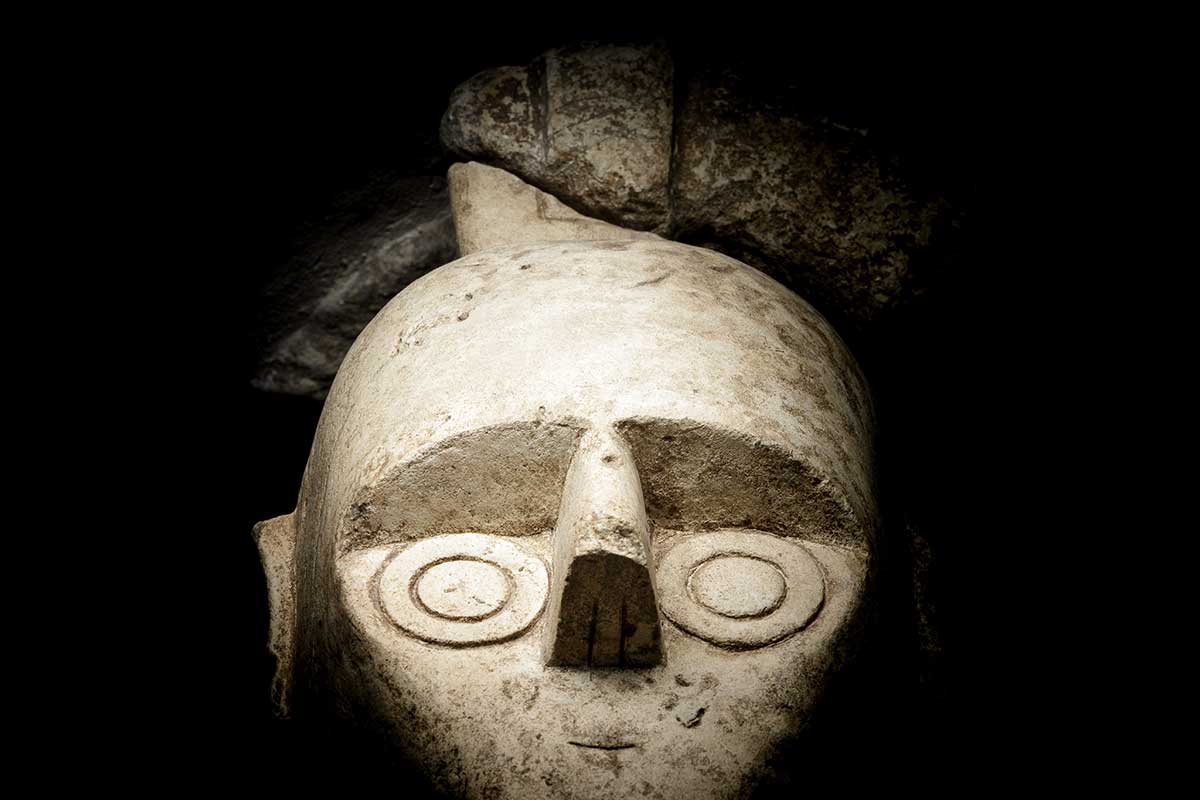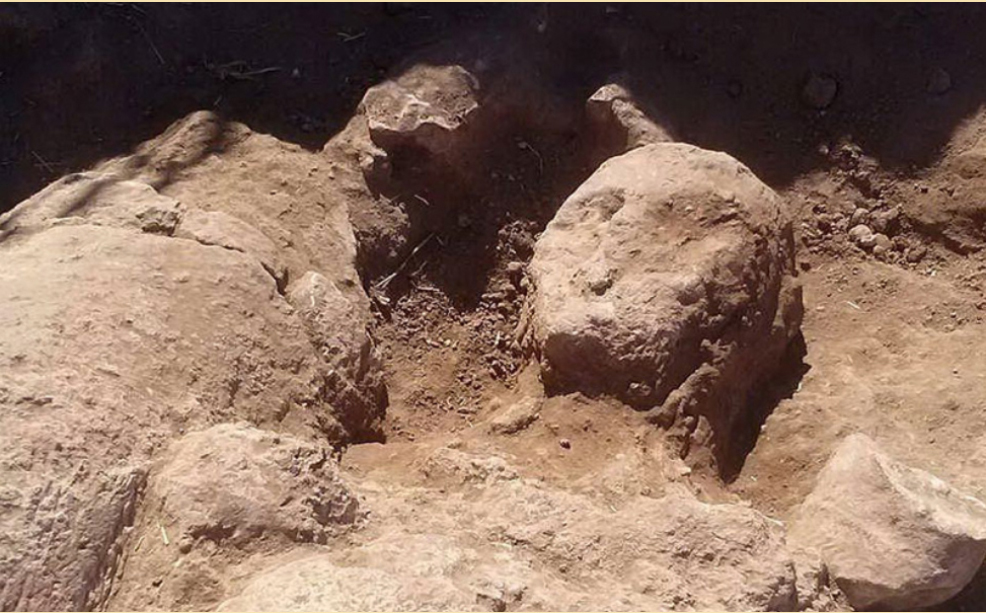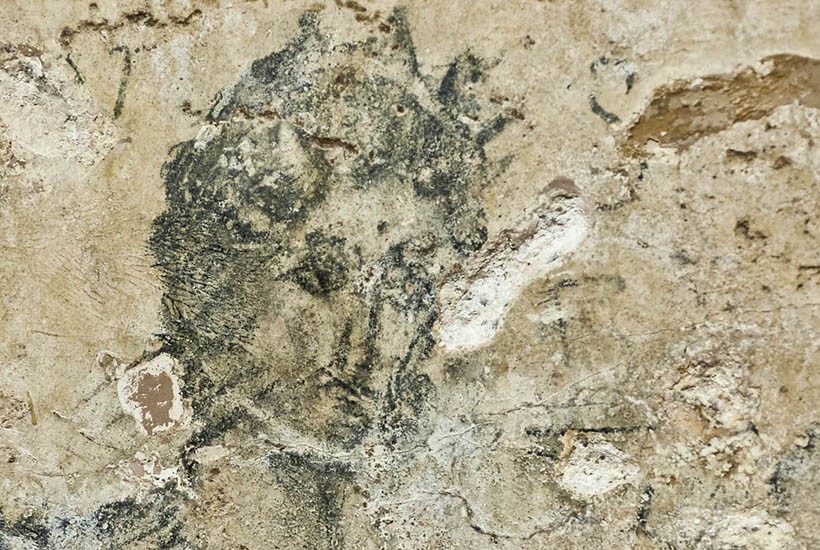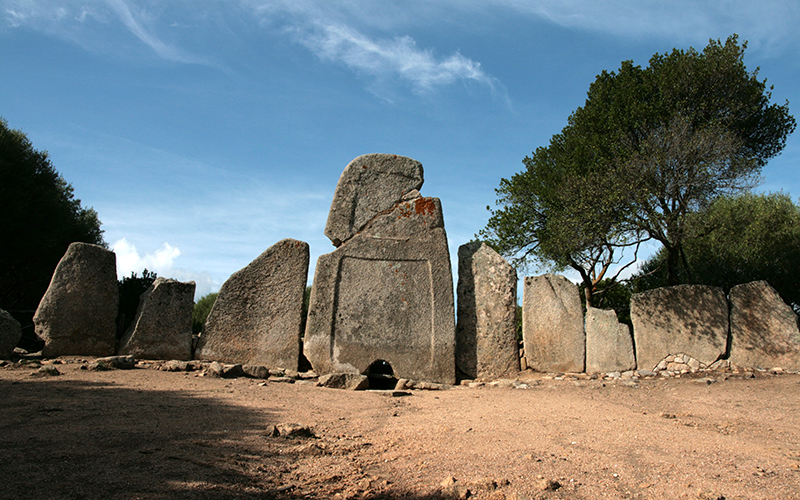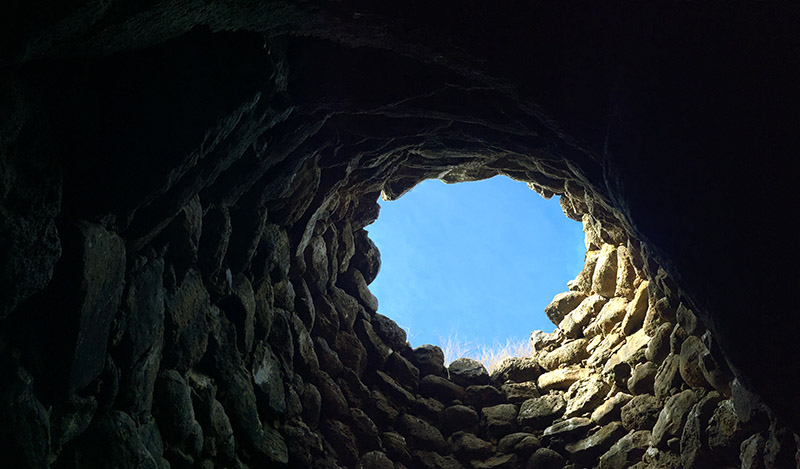Historical background
The sculpture complex of Mont’e Prama was not created by a single group of artisans over a short time span. Probably, several different groups worked on this imposing complex.
Who created Mont’e Prama?
The debate among scholars is still open and very lively.
We can find some answers by learning something about the people who lived on the island
in the long period running from the end of the bronze age to the iron age.
Naturally, the key reference is nuragic civilisation.

The bronze age: nuragic civilisation
Towards 1700 BC, in the middle bronze age, we find the first evidence of nuragic culture, which takes its name from the nuraghes, imposing stone monuments constructed according to the dry stone technique. The most advanced nuraghes had a truncated-cone shape with a circular base and had one or more floors, covered by a false dome or tholos. These stone towers could be single or comprise a main tower surrounded by two, three, four or more smaller towers. According to their number of lateral towers, these complex nuraghes are called bi-lobed, tri-lobed or four-lobed. The nuragic towers, whether single or complex, could stand in an isolated spot or be surrounded by a village.
The precise function of the nuraghes is still open to debate among experts, but it is likely that all of them, to varying degrees, served several functions: fortresses guarding paths, fields, pastures and streams, but also stores for keeping, processing and preserving foodstuffs, raw materials and finished products of all kinds. The towers were also impressive visual symbols of control of the territory and of organisational capacity by competing communities. The nuraghes marked out the territory of their community. They served as centres of power, systems of visual communication, spatial delimitation, management of resources, dwelling and defence. In many cases, the nuraghe was surrounded by a village of round stone huts or even true houses with a more complex layout. The village huts were constructed in stone or mud brick and roofed with vegetable materials.
Another characteristic element of the nuragic period were the chamber tombs, known as ‘tombs of the giants’ on account of their imposing size. These were collective tombs consisting of a low corridor-shaped funerary chamber, built above ground with very large stone blocks. The tomb was fronted by two lines of stones which formed a semi-circular ritual space, the exedra. The tombs might be made of vertical slabs, or of stone blocks.
The first type, known as orthostats, had a larger slab at the centre of the exedra, with a rounded upper half. At the base of this rounded stele was the opening leading into the tomb. The burial chamber was covered by horizontally placed slabs (platband).
As already stated, these were collective tombs, in which the dead of the community were laid, apparently with no distinctions according to rank. Often the tombs of the giants are found associated with betyls which symbolise the presence of a deity.
As regards the religious sphere, the sacred buildings created in the Nuragic period were of three types: well temples, sacred springs and ‘mègaron’ temples. The well temples were linked to the cult of the waters, with an underground chamber (hypogeum) and tholos roofing. The sacred springs too fulfilled the same function, but they were built around surface sources of water. Both the sacred wells and springs had above-ground structures, with double-pitch roofing. Lastly, the mègaron temples had a rectangular ground plan with one or two chambers and were surrounded by a stone fence, the tèmenos.
The nuragic peoples lived by tilling the land and breeding livestock and produced bronze objects and tools. They were in close contact with the other western and eastern Mediterranean peoples of the time.
Towards 1200 BC, nuraghes were no longer being built. Those already existing were kept in use or were abandoned and dismantled, while in the villages life went on and was intensified. The ‘tombs of the giants’ too stopped being built, but again, the old ones continued to be used.
Iron age: the late Nuragic civilisation and contacts with eastern seamen
The passage from the late bronze age to the early iron age (between the 12th and 9th centuries BC) was marked by significant changes: there were changes in the production of pottery and the layout of the villages and sanctuaries and there was also an increase in the manufacture of bronze artefacts.
This was the period of greatest flowering of the mature nuragic civilisation, by that time profoundly changed from the far off time in which the cyclopean monuments had been created. We also find increasingly large numbers of refined objects of eastern or tyrrhenian manufacture.
The seafarers from the Aegean and the Near East had for some time established trading and cultural relations with the people of the island. These cultural contacts produced significant changes, probably also in the usages and customs of the local communities. This led to the emergence of a new society. Apart from the trading posts we find the first permanent settlements.
The phoenicians were a semitic people who had been living on the coasts of Lebanon since the third millennium BC and who engaged in intense trading and maritime activity. With the arrival of the phoenicians in Sardinia, the nuragic world, by that time approaching its sunset phase, entered into direct contact with the urban model by then well established in much of the Mediterranean basin. The phoenicians established footholds in Sardinia between the 9th and 7th centuries BC at different times and at different sites in the territory, until the arrival of the carthaginians (the phoenicians of Carthage), who in the 6th century BC conquered part of the island.
